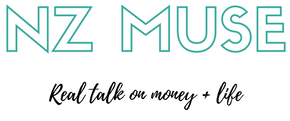Exciting (if dorky) news – I finally joined Kiwisaver!
I haven’t had my first deductions yet so I don’t know how much exactly it will be, but given that I’m contributing 4% and should make $1320 in an average fortnight, I should be putting in $52.80 per paycheck. After tax this would be $1056, leaving me $1003 take home.
So in 6 months I should have… $2788, excluding fees, gains and taxes.
Of this, less than half would have come from my contributions, thanks to the generous initial incentives.
$792 – me
$396 – employer
$1000 – government kickstart
$600 – tax credits
Even if my fulltime hours don’t last beyond the next few months, at least I’ll have contributed a decent amount in that time!
(I would do the math for a year’s worth, but I really, really don’t want to jinx it).
After a lot of tossing back and forth, I decided to go with Huljich in their growth investment fund.
Seeing as Kiwisaver is only a couple of years old, none of the funds have much of a track record. But Huljich has performed well, in all of their schemes. I based this off information on fundsource.co.nz and this Morningstar survey.
I also switched T over to Huljich, moving him from one of the six default government schemes (AMP). Huljich’s high fees worry me a bit, given he’s not actively contributing, but even if returns don’t continue as they have been at least he still got a free thousand dollars in there.
KIWISAVER 101
There’s a wealth of Kiwisaver info out there, so I’ve just done a quick roundup here. A quick Google search should tell you anything more you need to know, or Sense to Dollars has done a nice series on joining up and picking a provider.
Kiwisaver is made up of:
- your contributions
- your employer contributions
- the government kickstart
- the government tax credit
You can contribute 2%, 4% or 8%. Your KiwiSaver contributions are calculated on your before-tax pay, but deducted from your after-tax pay. (Yeah…still scratching my head a bit on that one).
You also still pay tax on the full amount that you earn. Let’s say you earn $500 a week. You contribute 4% ($20), but will be taxed on the full $500.
(I definitely recommend the Sorted calculator for playing around with contribution levels and future projections!)
Your company will make contributions of 2%, and the government will stump up a tax-free $1000 three months after you join, plus up to $1,042.86 a year in what they like to call member tax credits. This is untaxed and will be claimed on your behalf by your fund provider in July each year. If you join KiwiSaver part-way through a membership year (1 July to 30 June), you get a tax credit for the portion of the year that you’ve been a member.
GETTING YOUR HANDS ON IT
Withdrawals are tax free. You’re eligible to withdraw funds at age 65. Alternatively, you can withdraw your funds if you are:
– buying your first house (you can take out your contributions and your company contributions, but not any the government contributions. you could also get a subsidy of up to $5000)
– suffering significant financial hardship (you can take out your contributions and your company contributions, but not the government contributions)
– seriously ill or disabled (you can withdraw all of the funds in your account)
– moving overseas permanently (you can withdraw your contributions, your company contributions and the government $1000 kickstart, but not the government tax credits)
SIGNING UP
To sign up, ask your employer for a KiwiSaver employee information pack (KS3) and fill it out. Your details go off to the IRD and you’ll be temporarily allocated to your employer’s chosen scheme, if they have one, or one of the six default KiwiSaver schemes. The IRD will hold your contributions and your employer contributions, and pay interest on them. Within 3 months of your first contribution you get the option to choose your own scheme (this is about the time you get the $1000 kickstart) and will then be enrolled with them.
OR, you can join directly through your provider of choice, which is what I did. Again, the IRD will hold your contributions for three months with interest, throw in the kickstart after 3 months, and then hand it over to the provider.
You’ll be automatically enrolled if you start a new job. You can opt out if you do so between 2-8 weeks. This is the ONLY time you can opt out of the scheme.
If you’re self-employed or not working, you can sign up and make payments directly to your provider. Some have minimum contribution requirements, so do your research if you’re going down this path.
MAKING A COMMITMENT
Once you’re in, you’re in life, basically. You can apply for a contributions holiday to the IRD of three months or more. Your employer will stop contributing as well, although you can continue to make voluntary ones.
There’s no limit to the number of times you can take a contributions holiday and you can renew it at any time. Generally, you do have to wait a year from the time you first join to apply for a holiday, unless you get into dire financial straits.
Phew! There’s quite a bit to wrap your head around at first, but it’s really not too complicated. I’m going with the set it and forget it route. Given that not only you and your employer contribute, but the government does too, it’s a pretty sweet deal.


